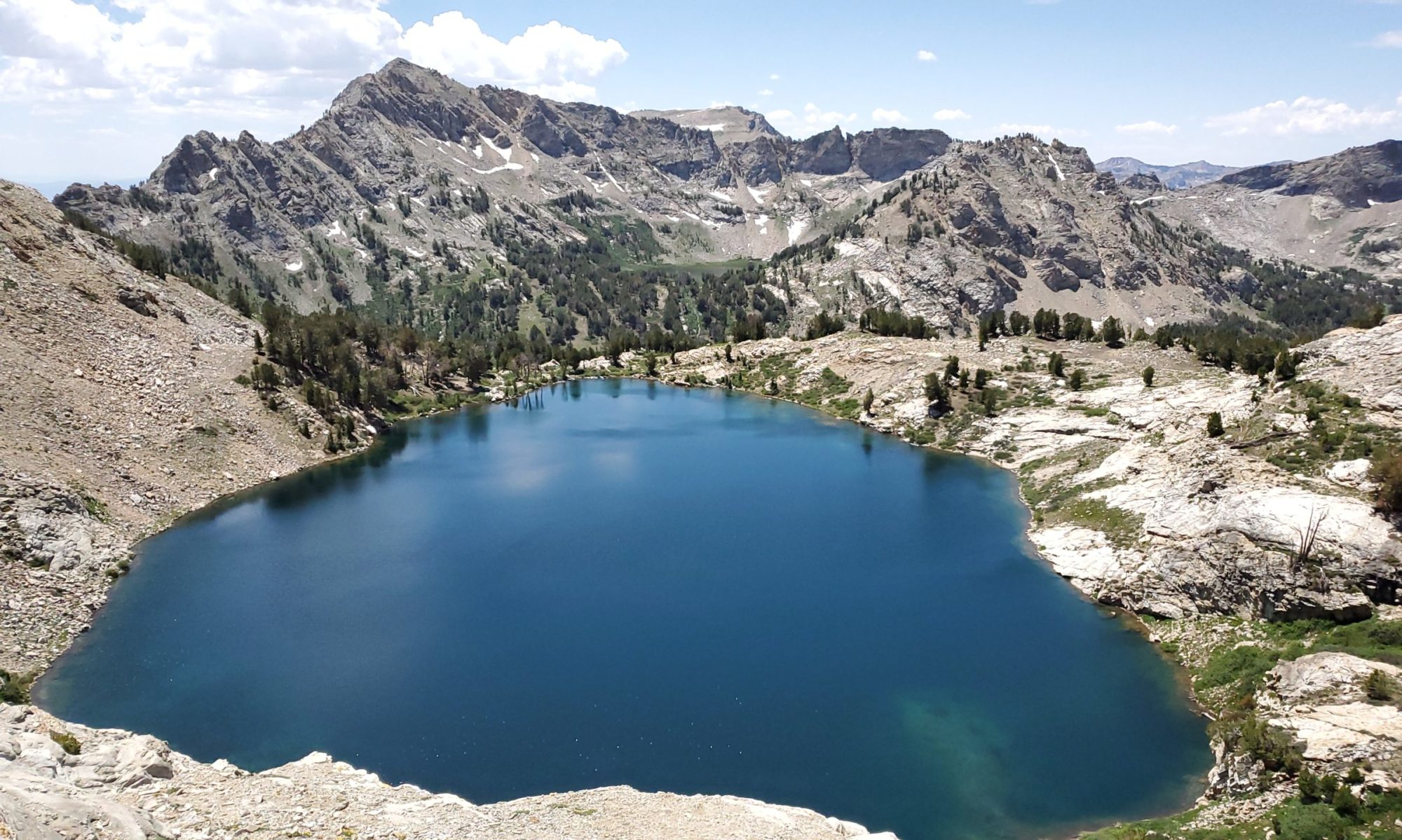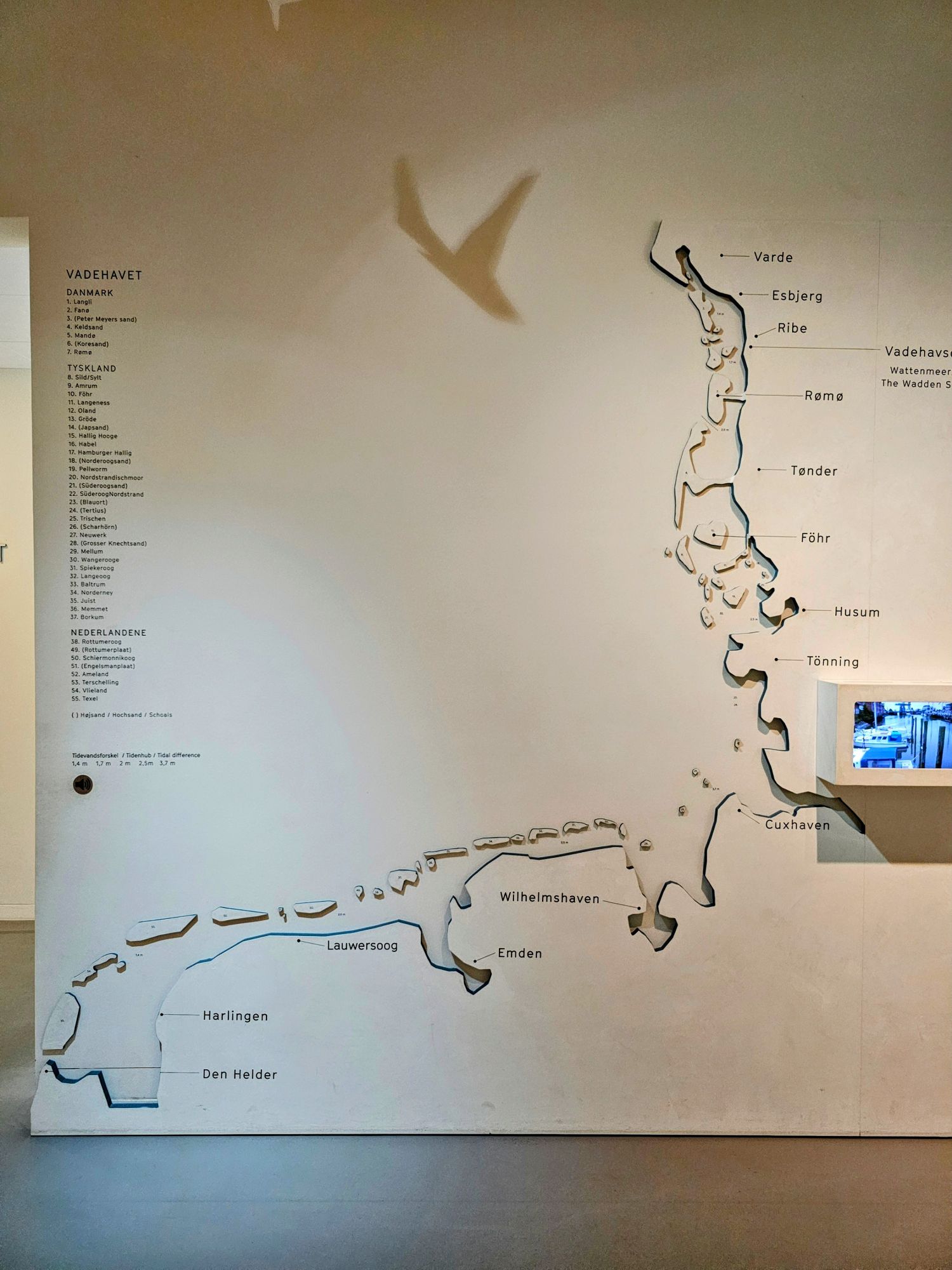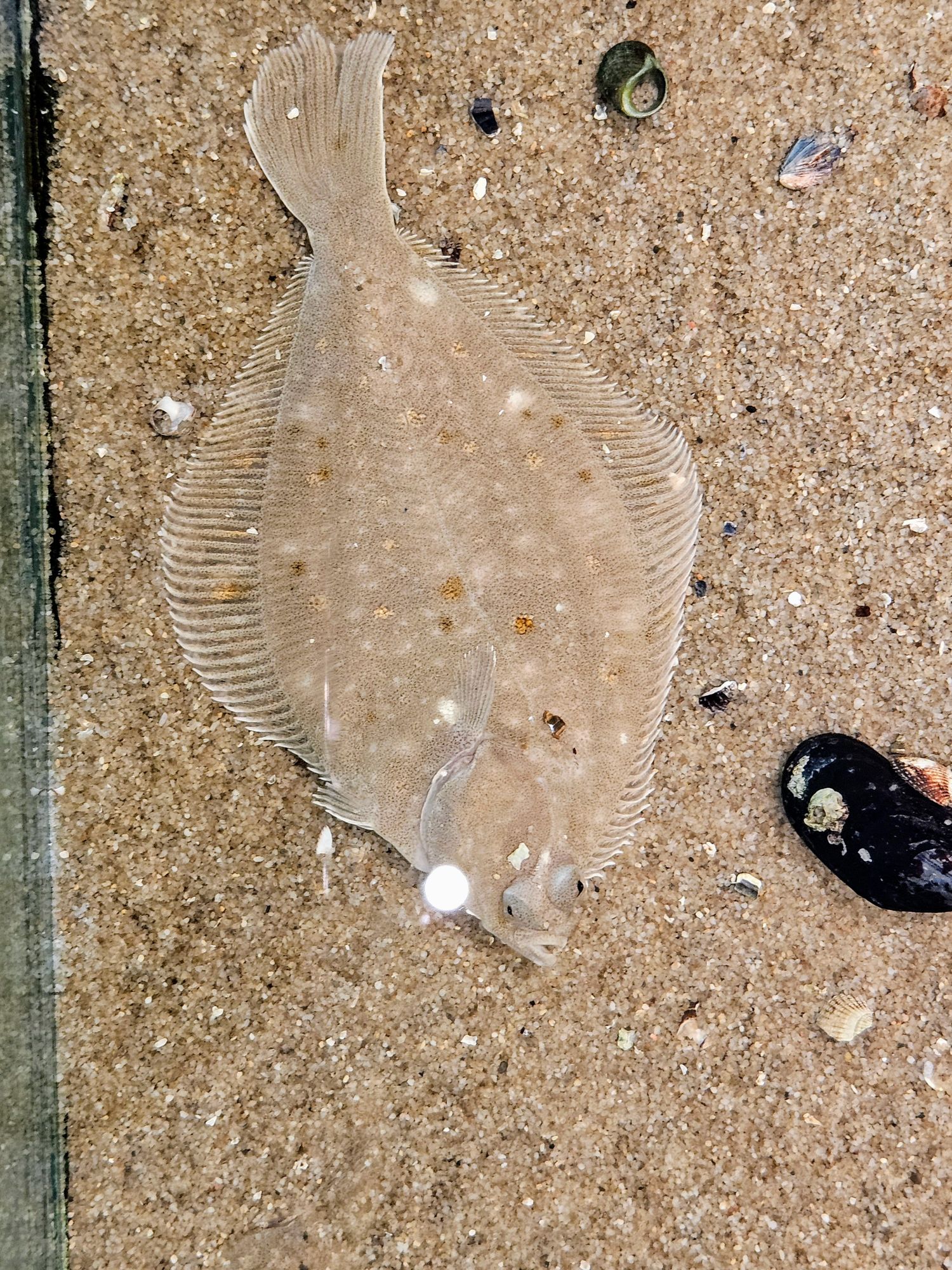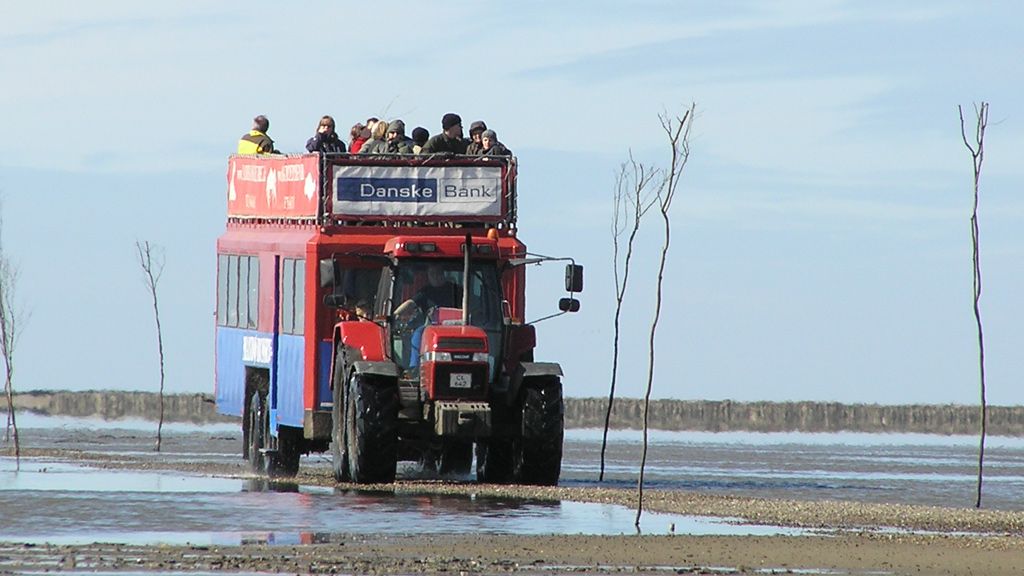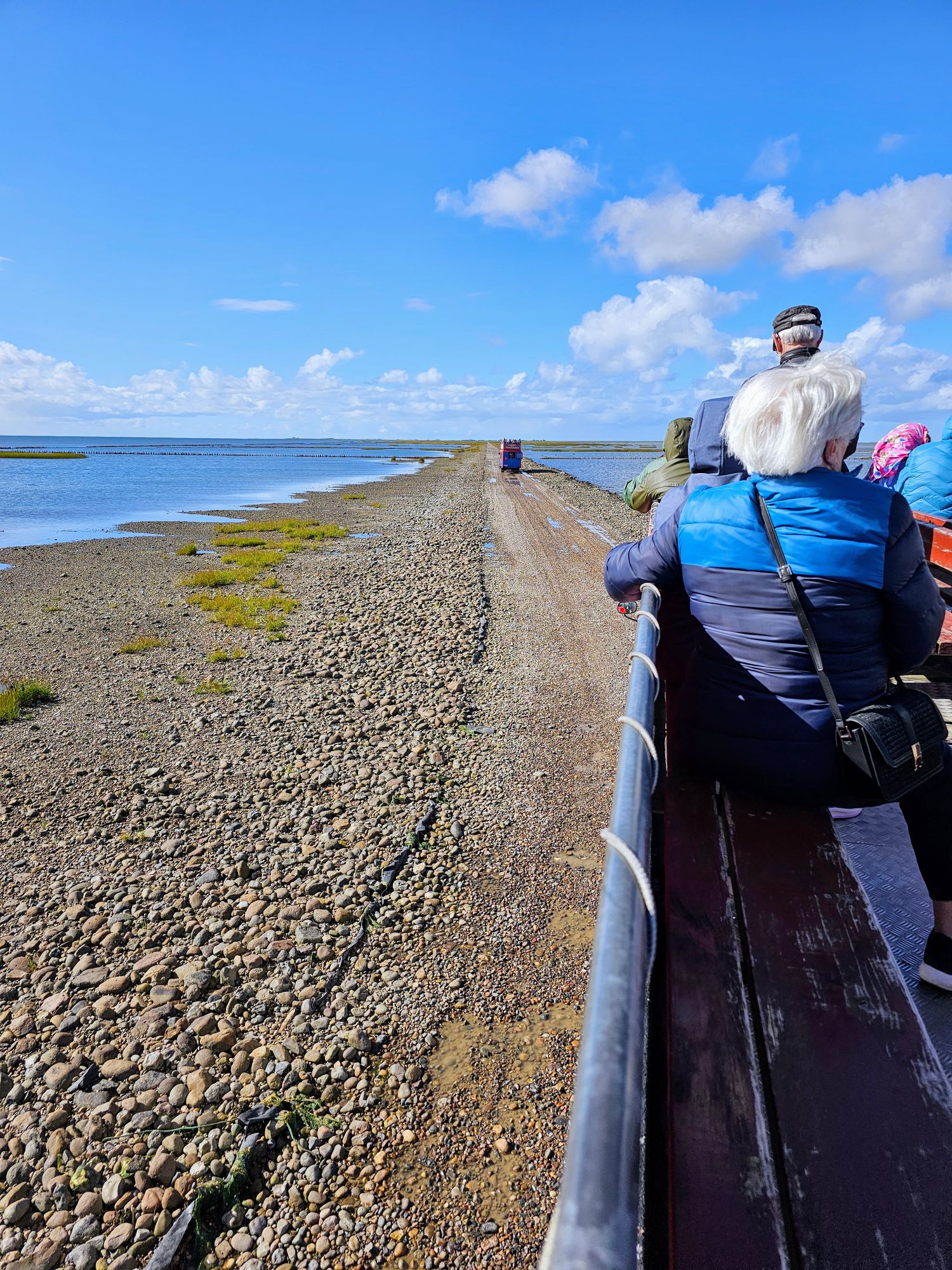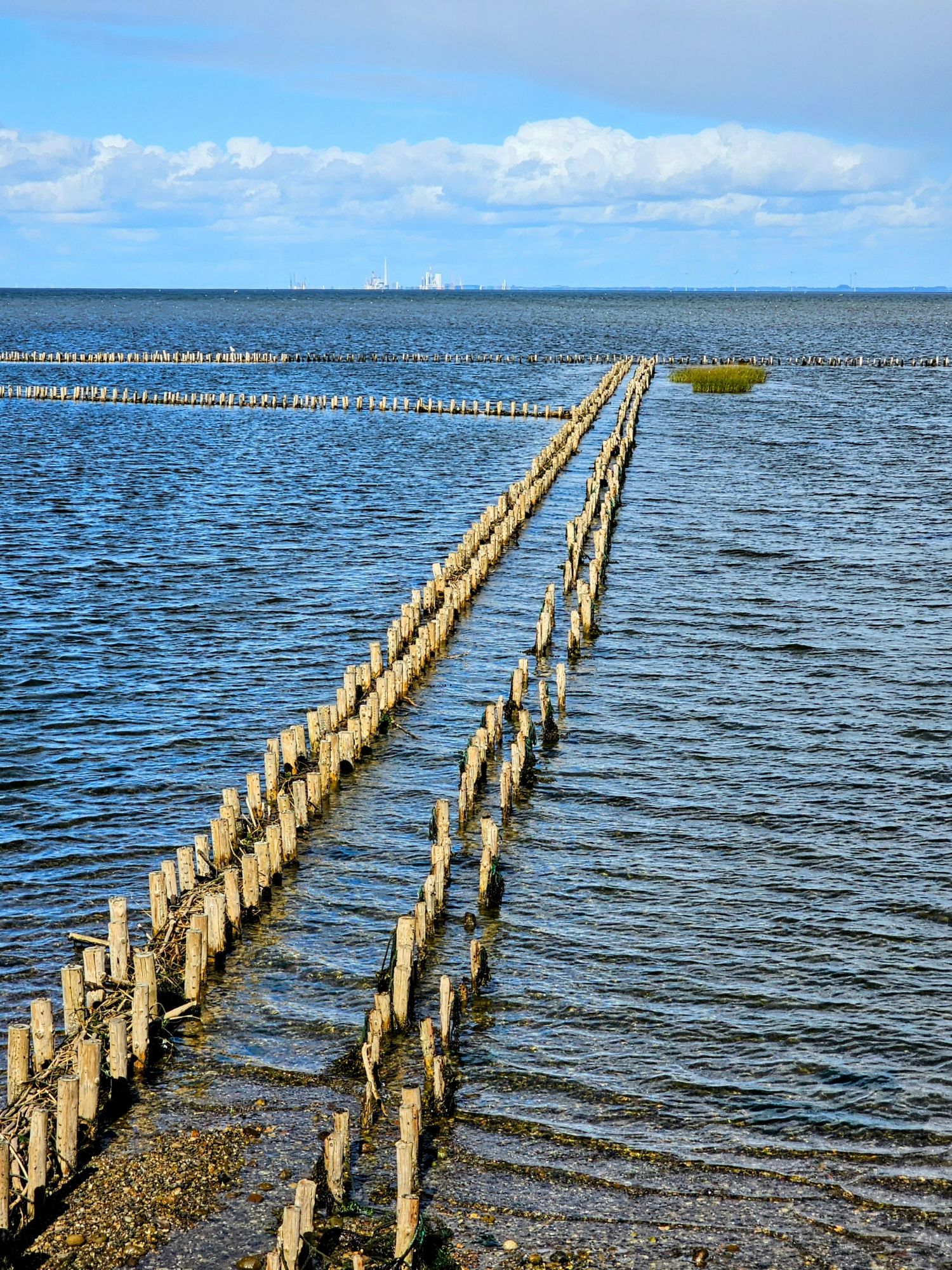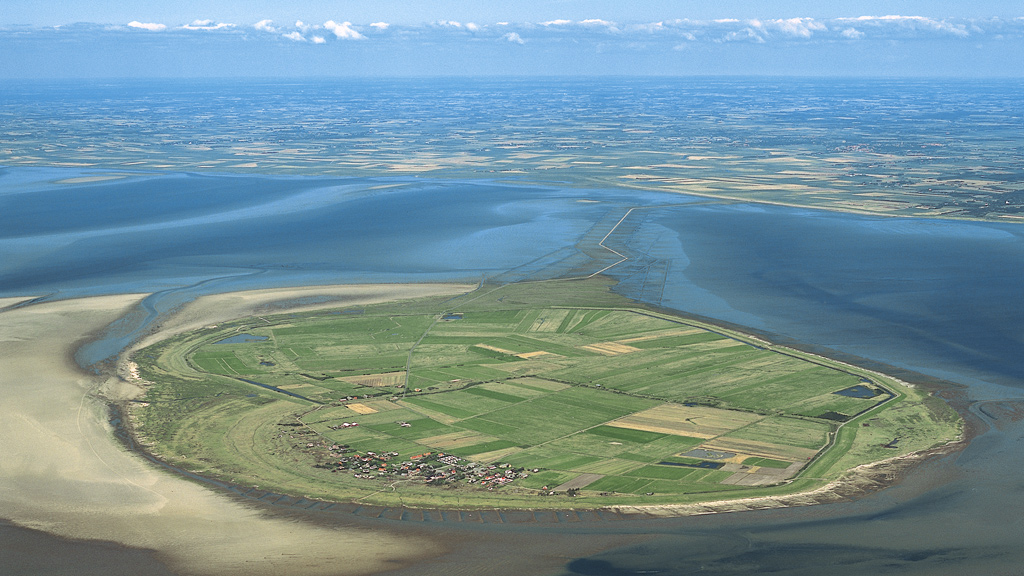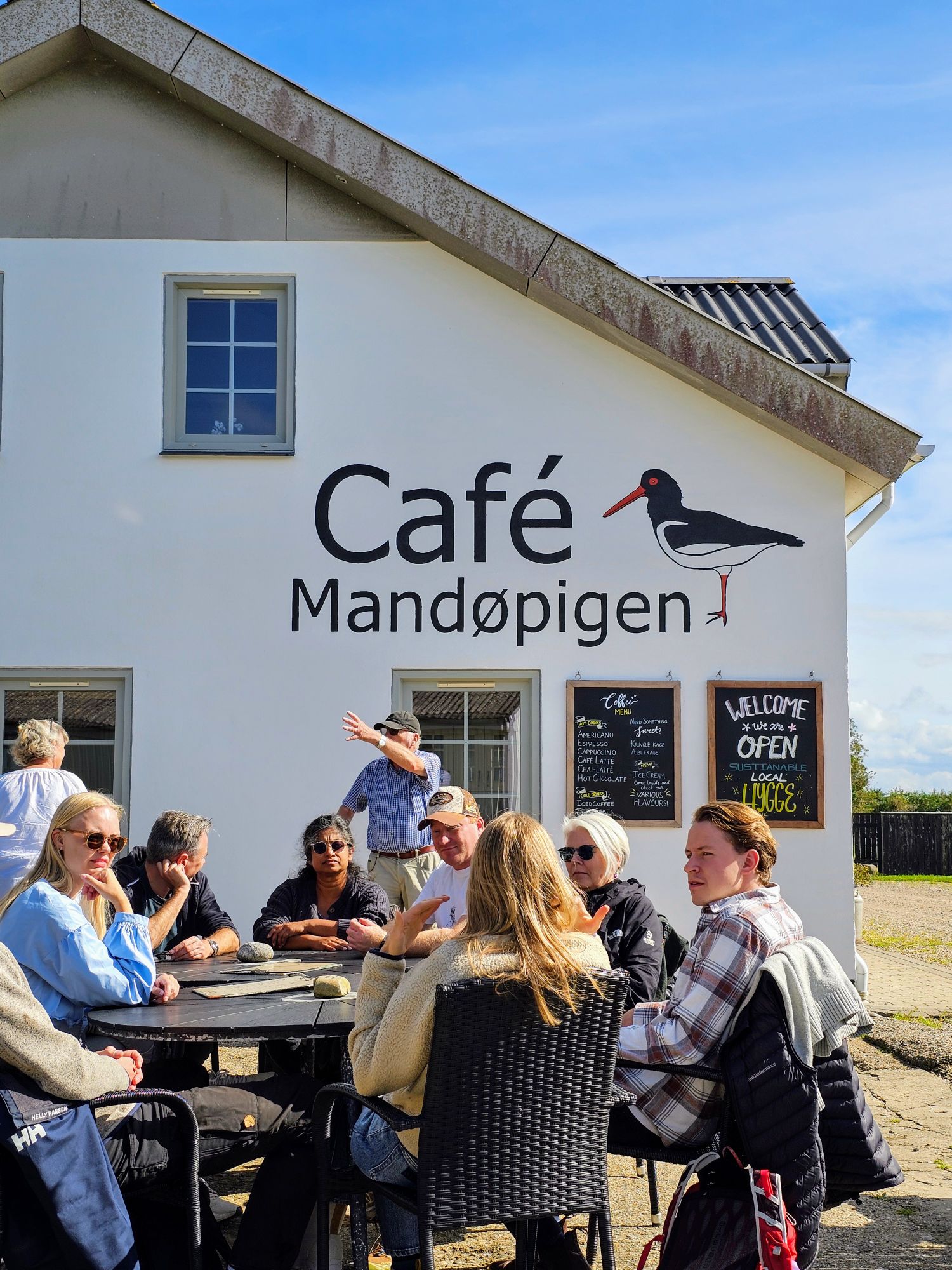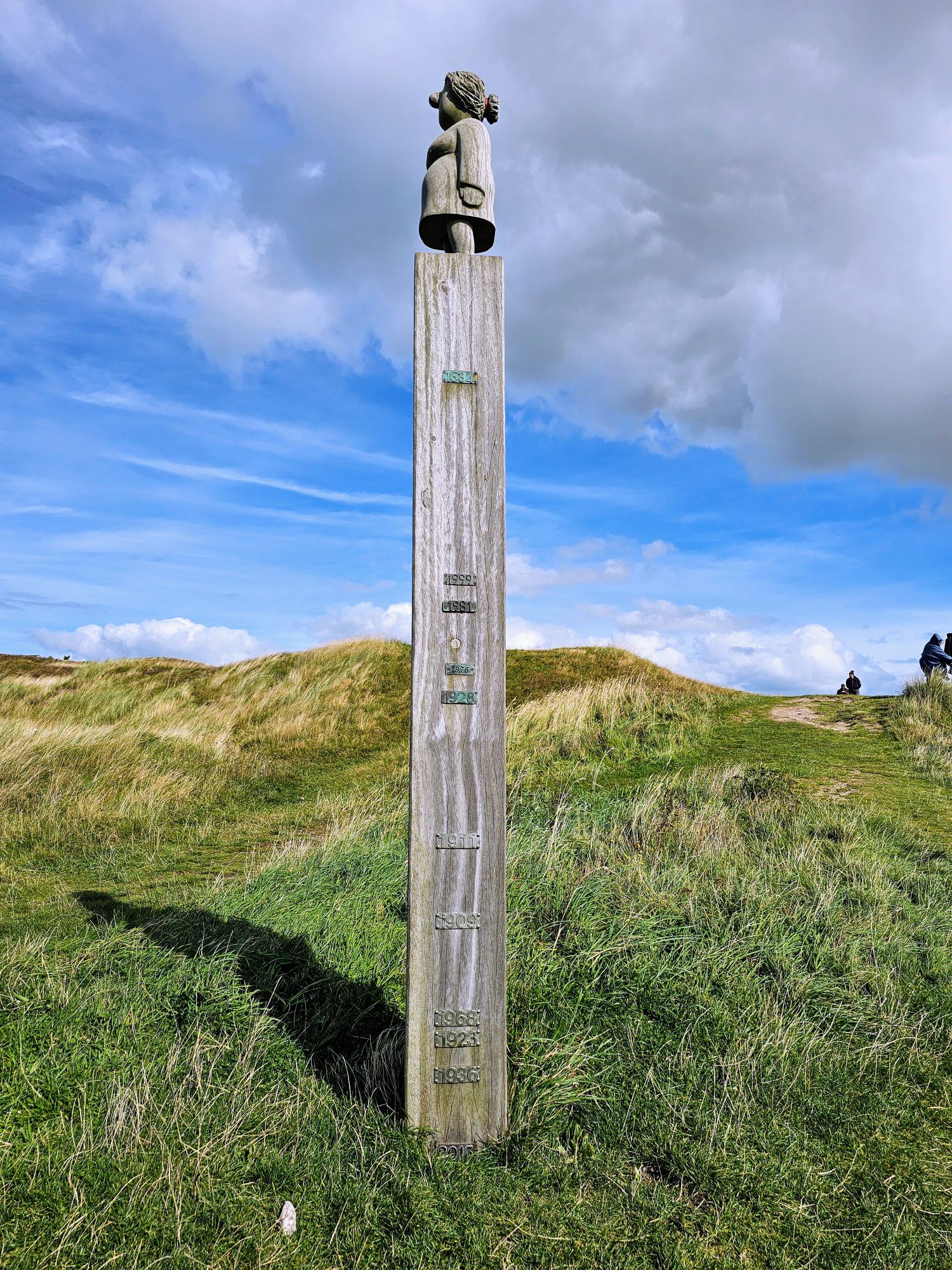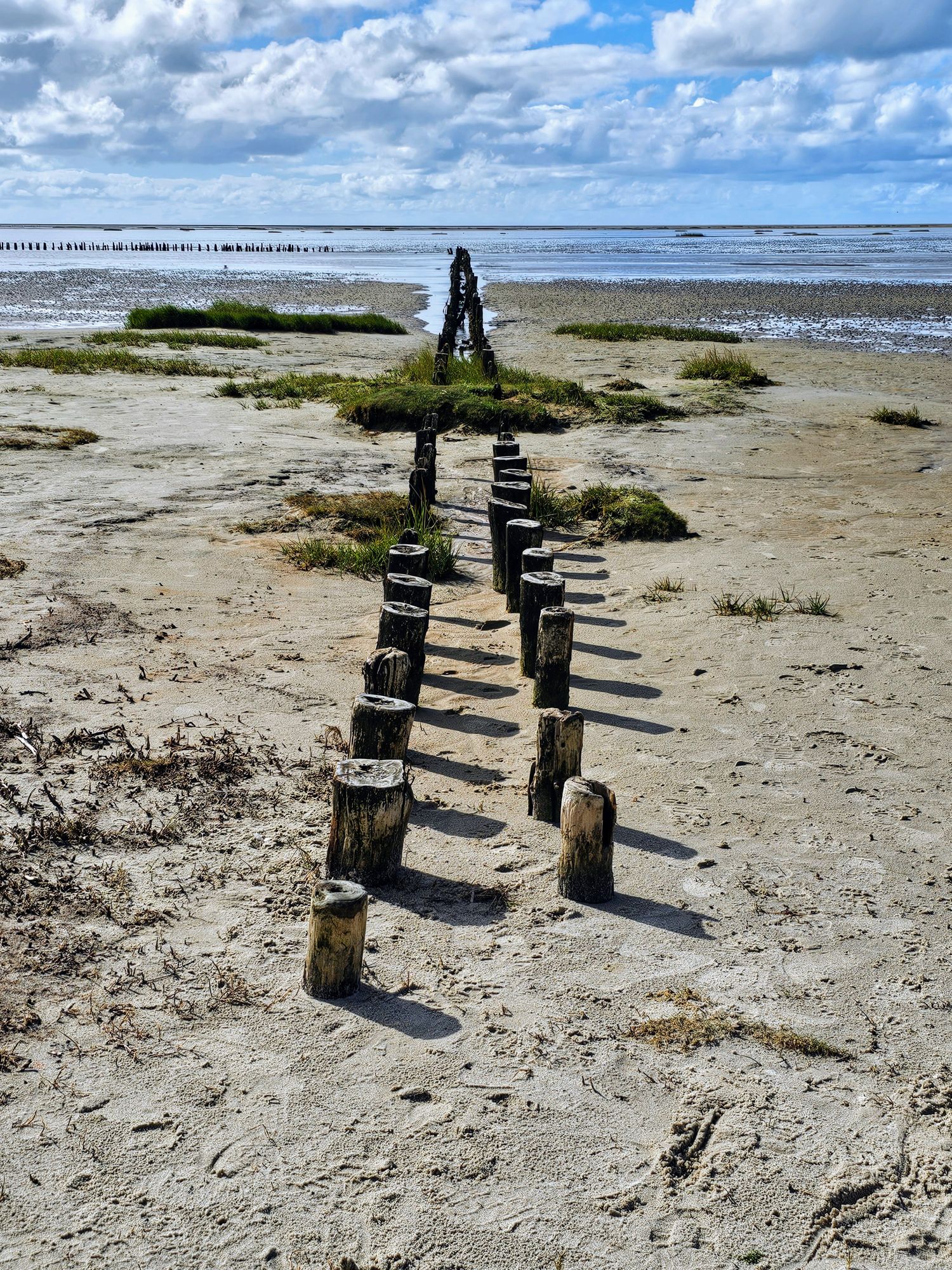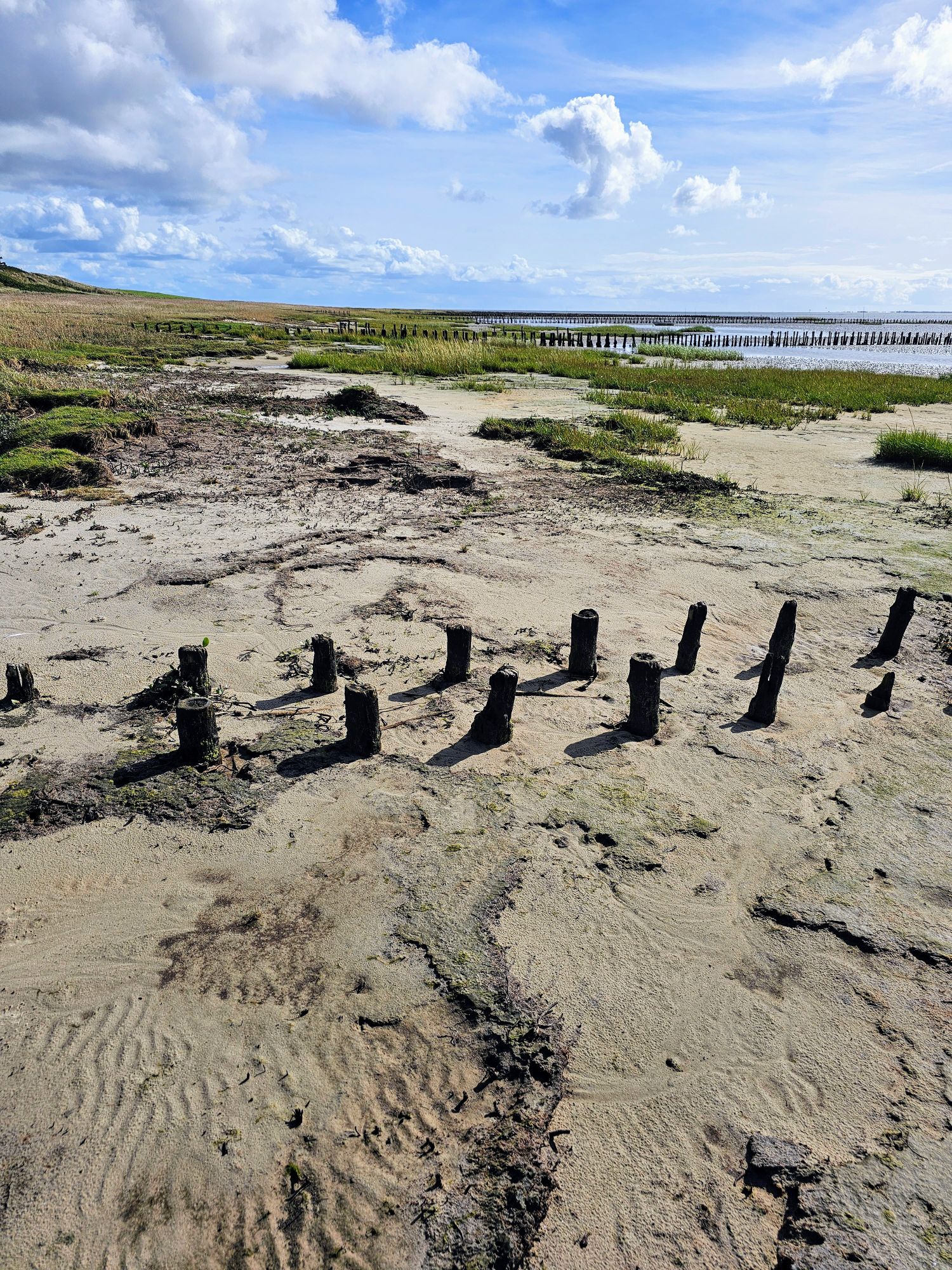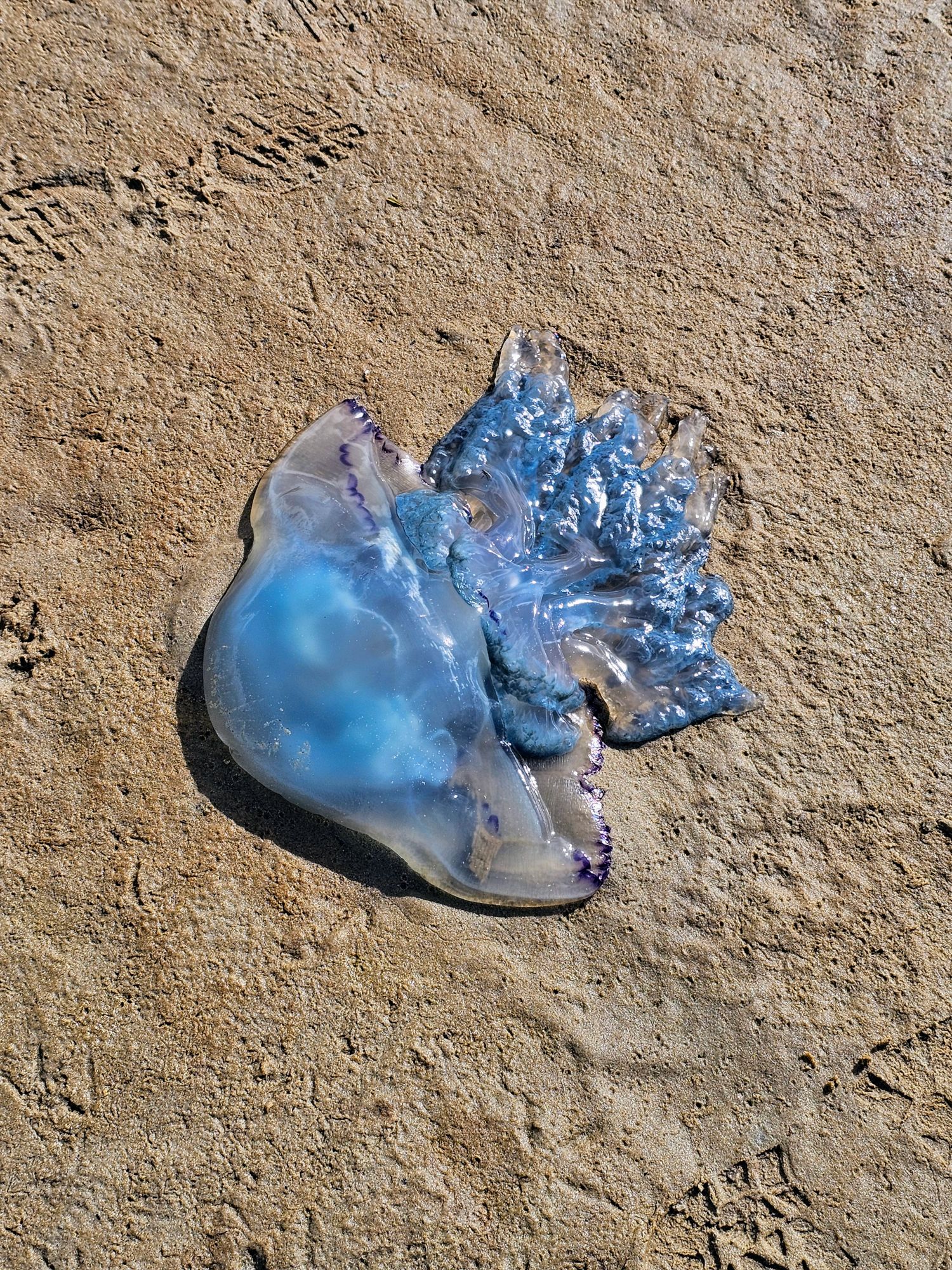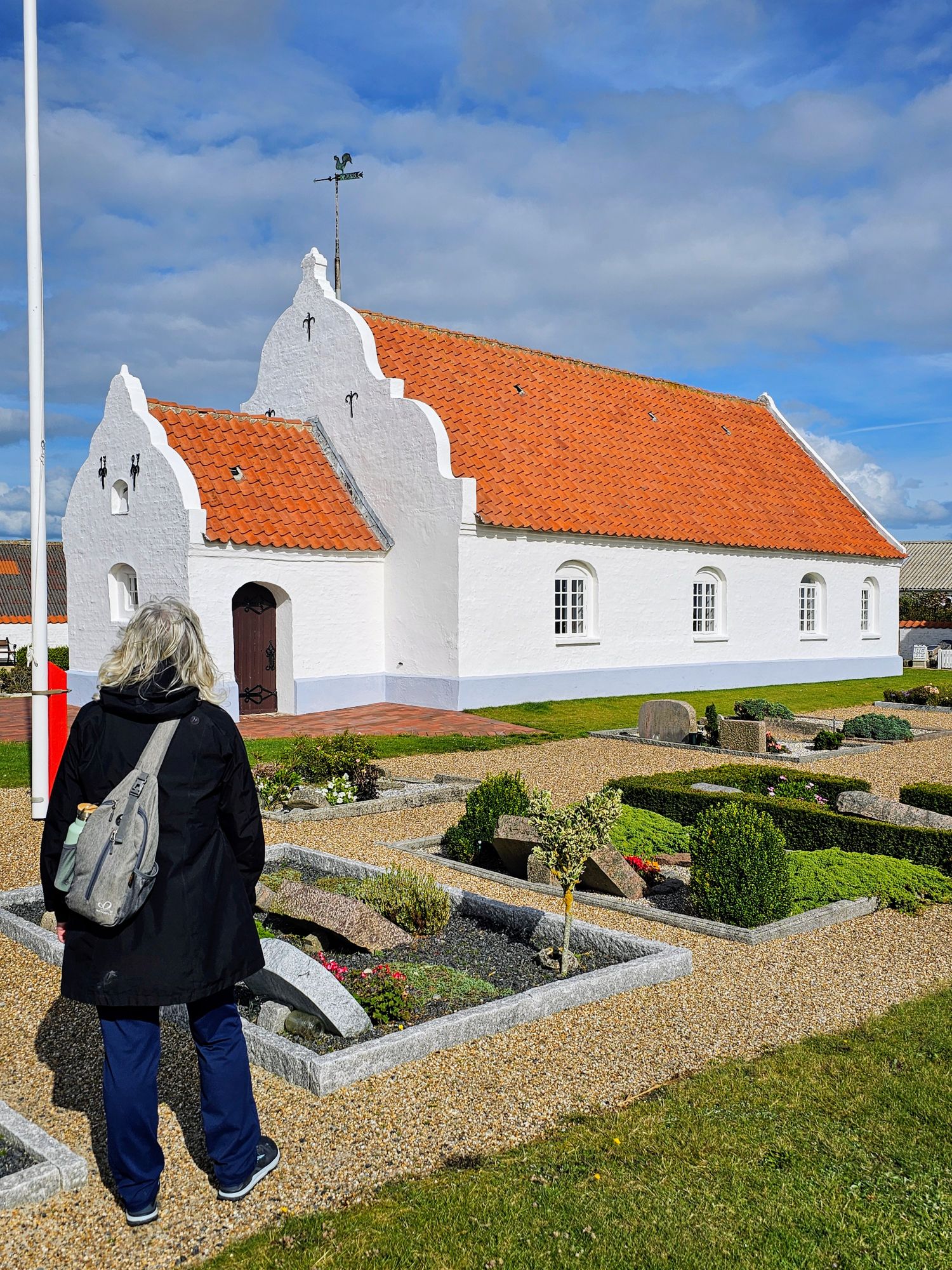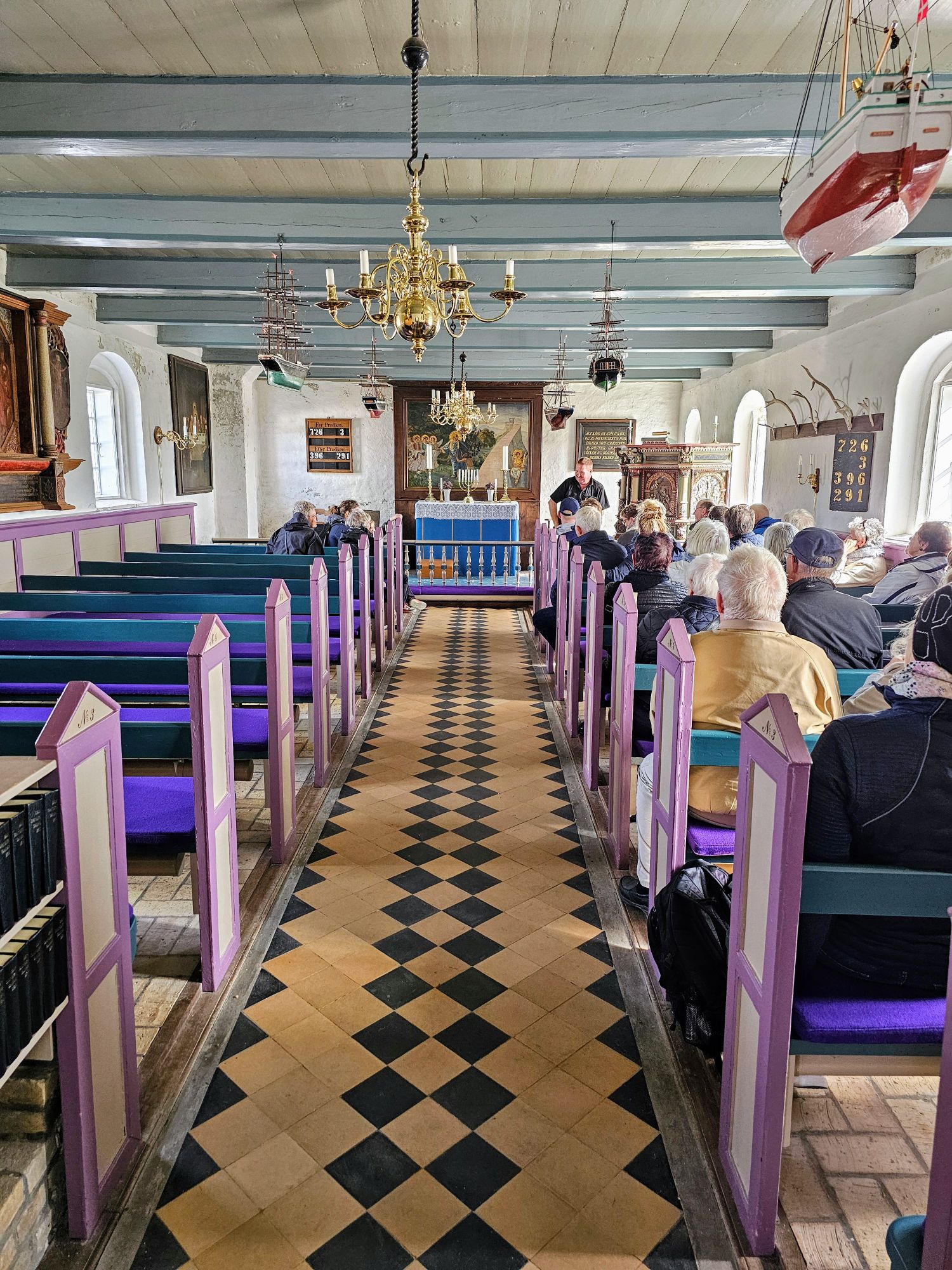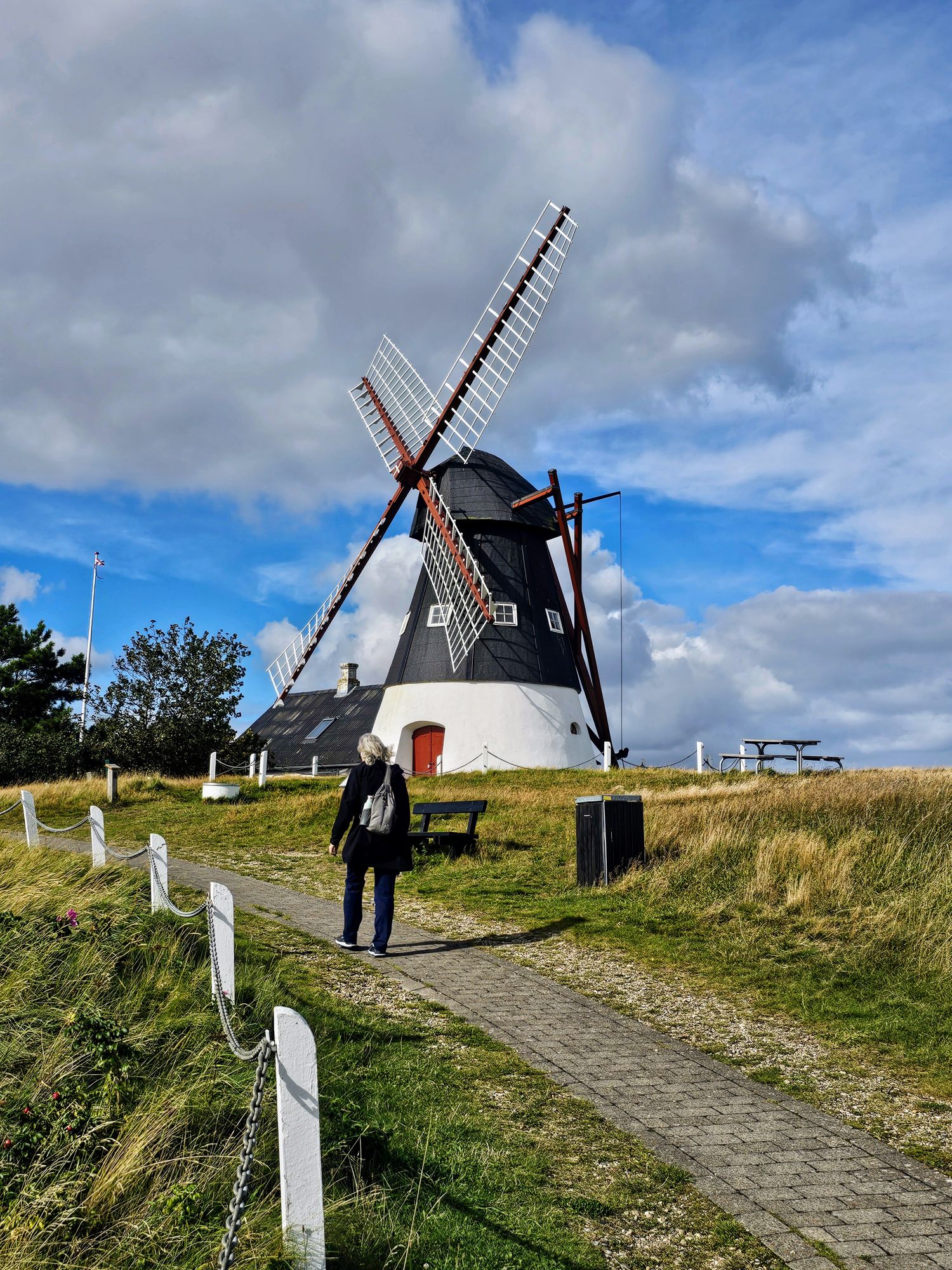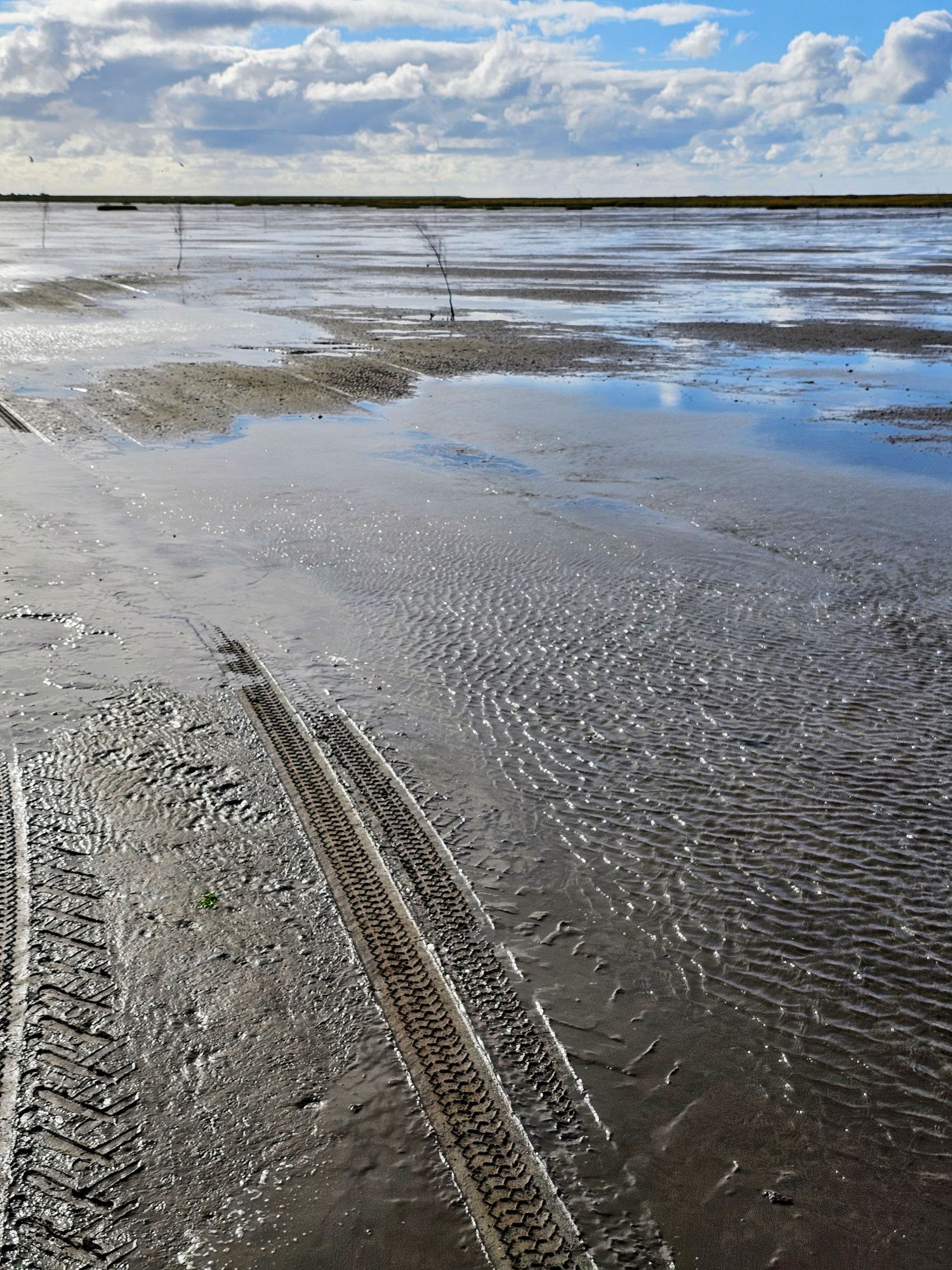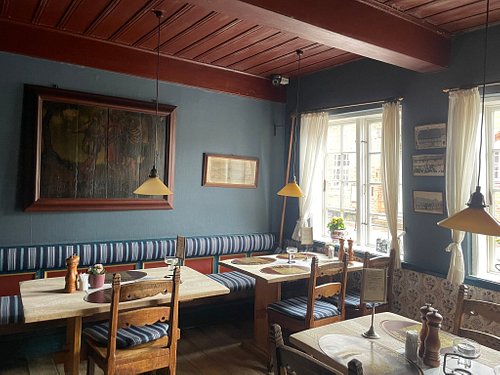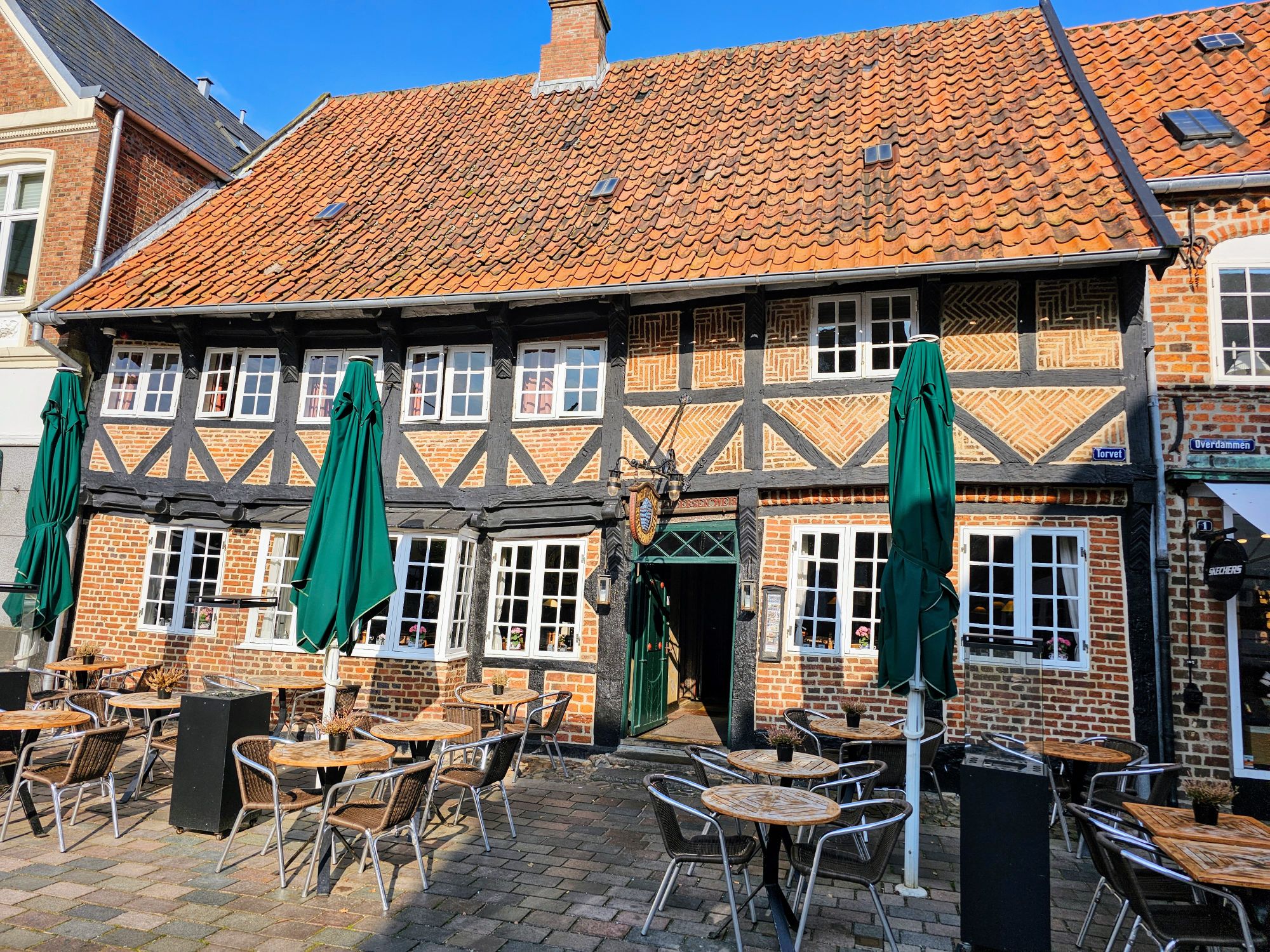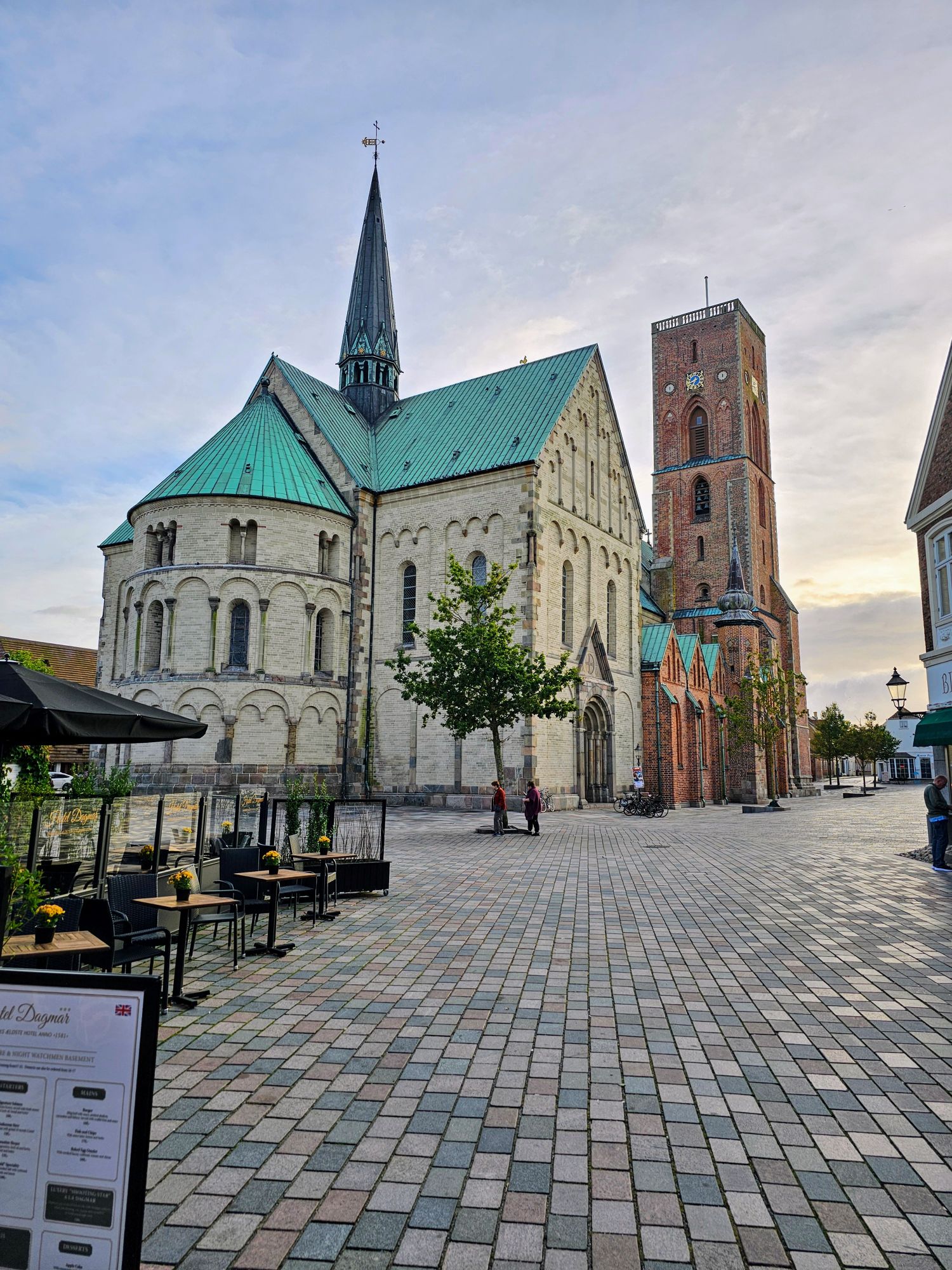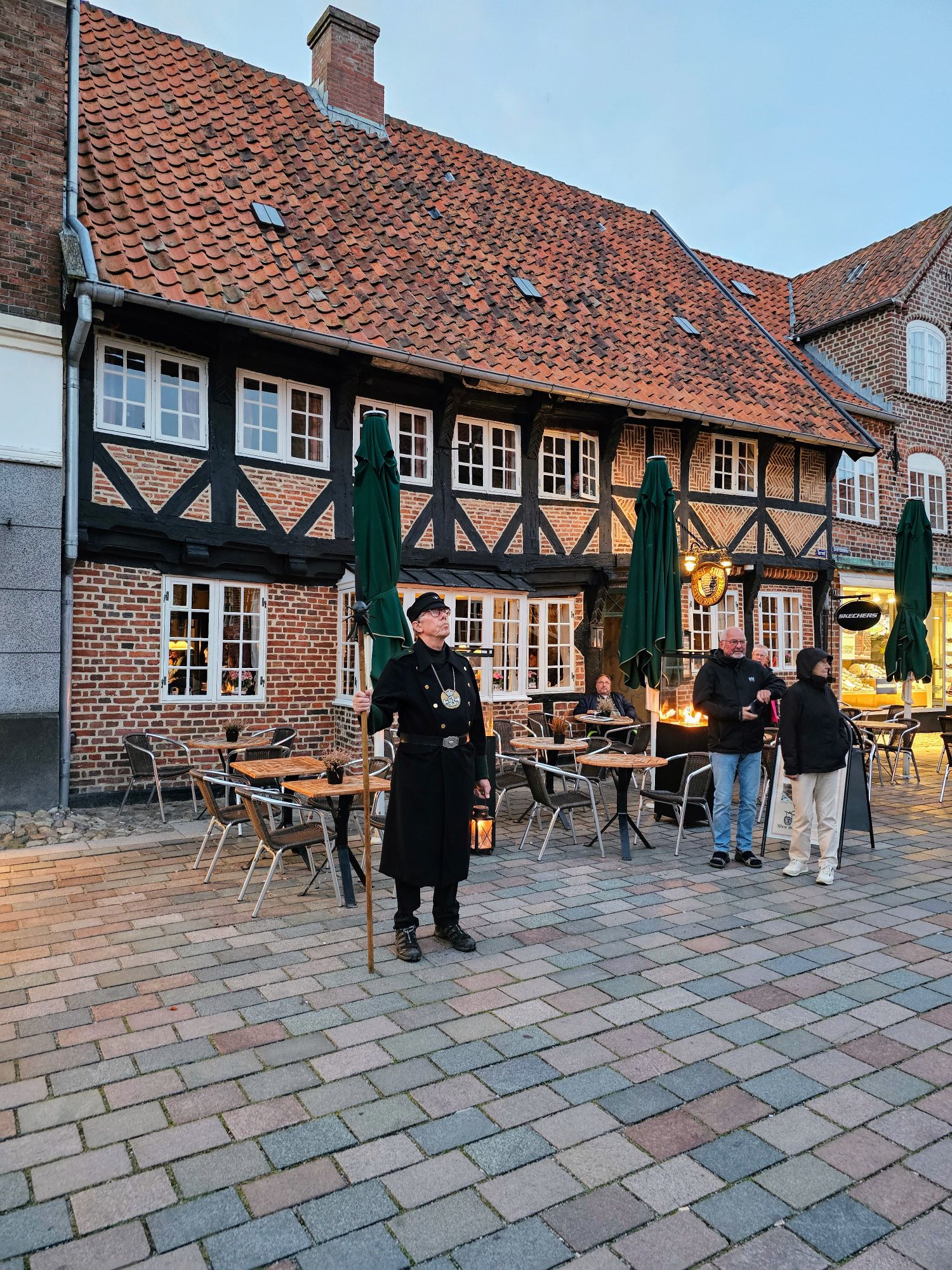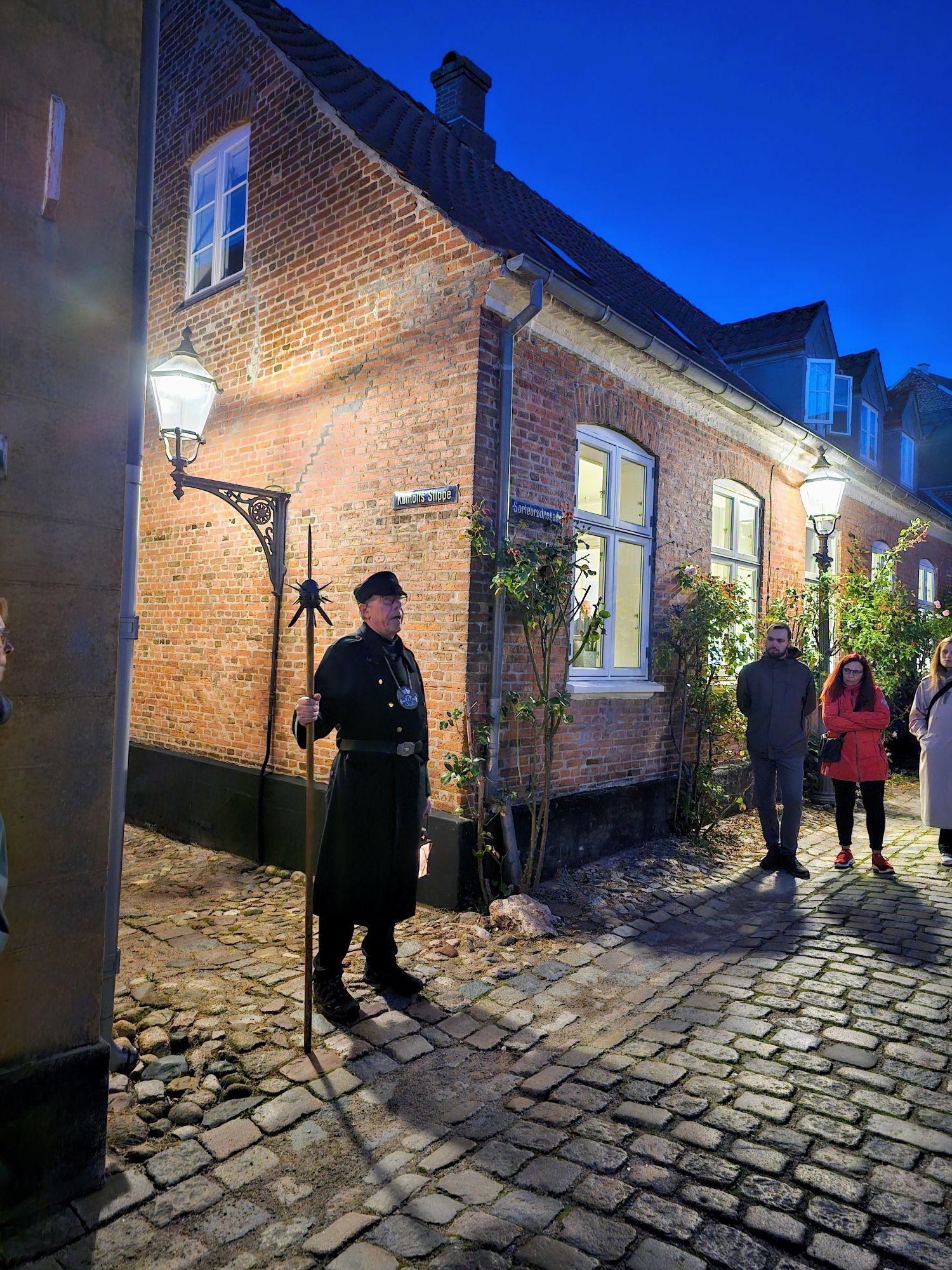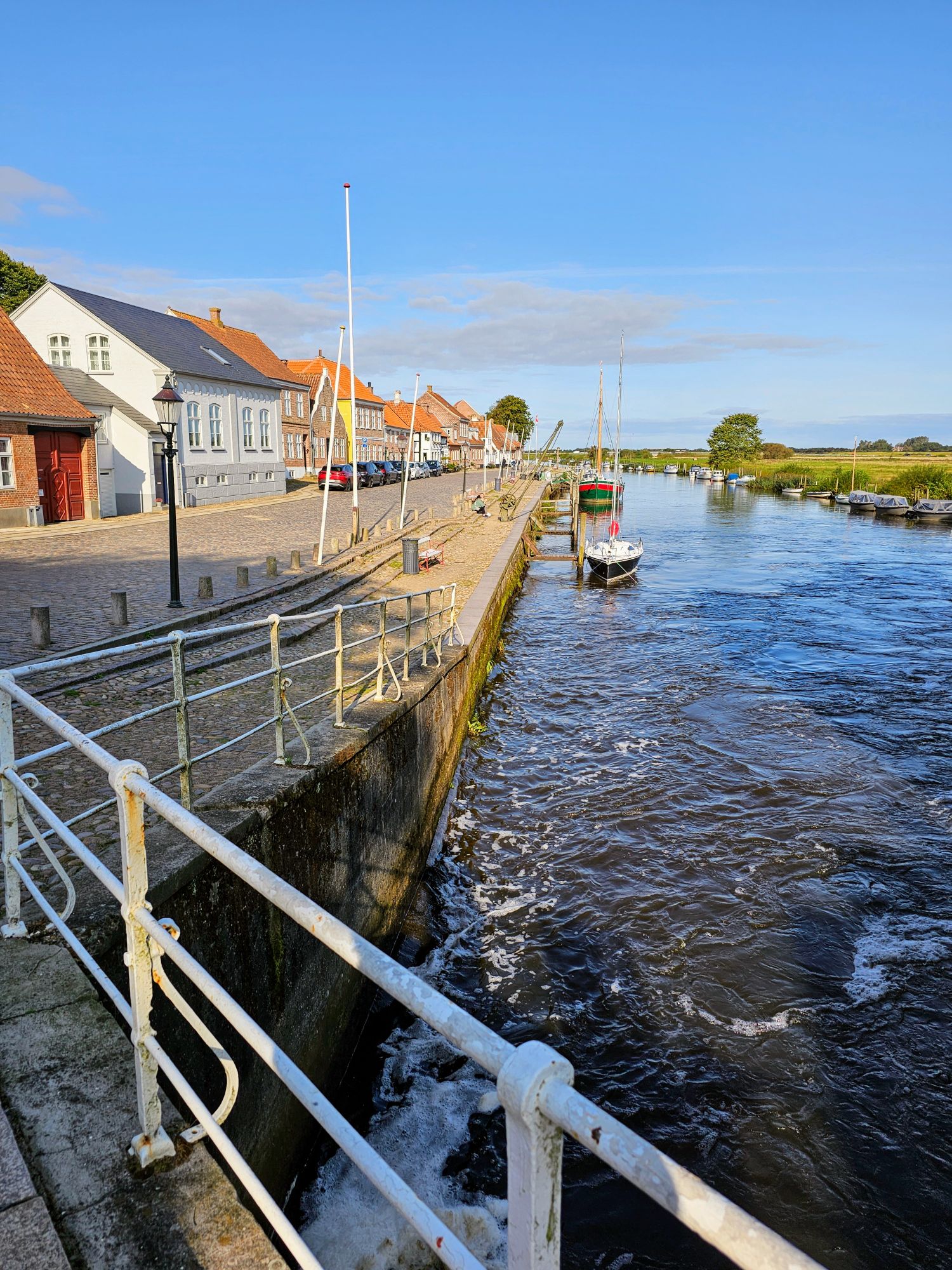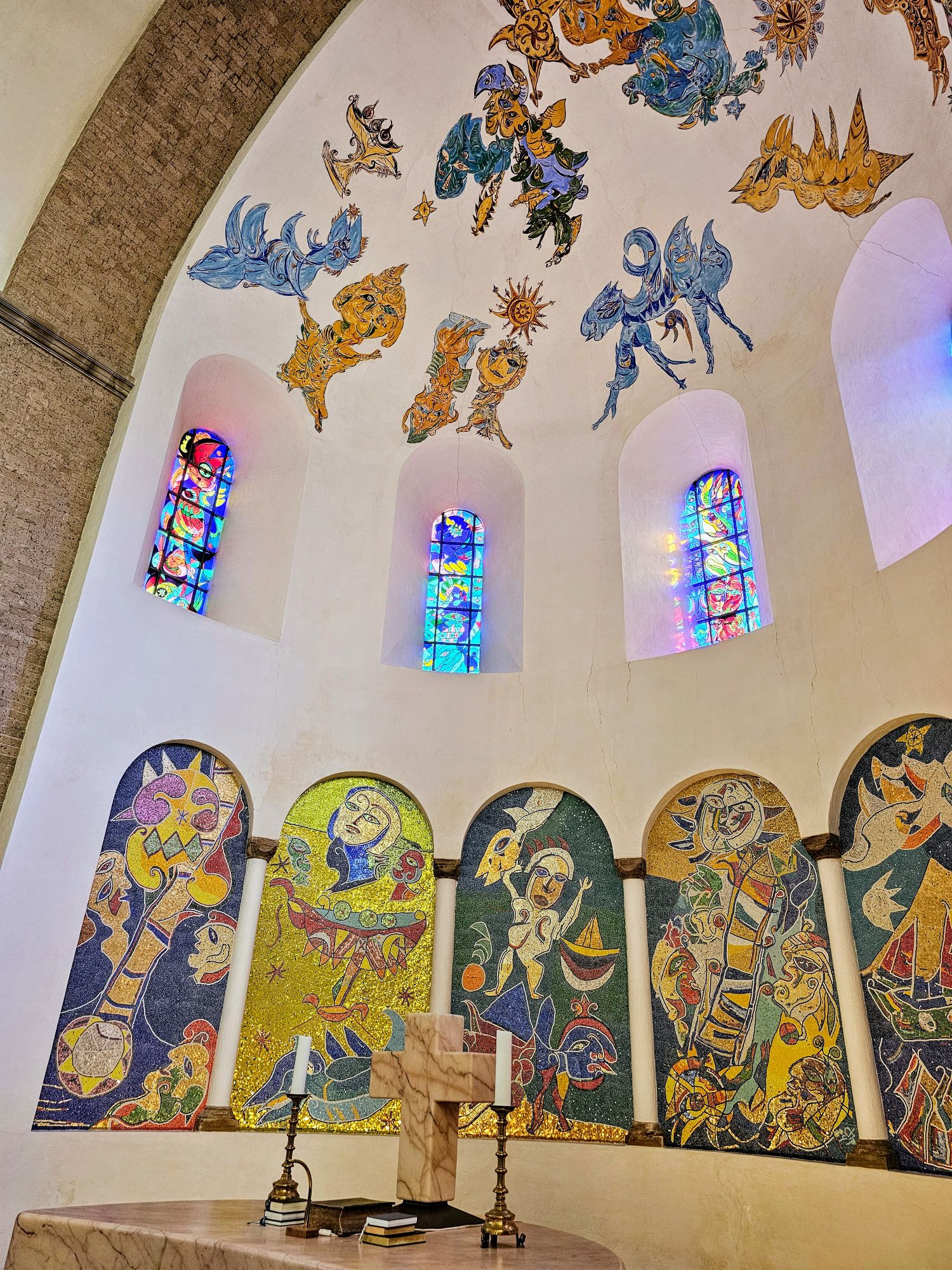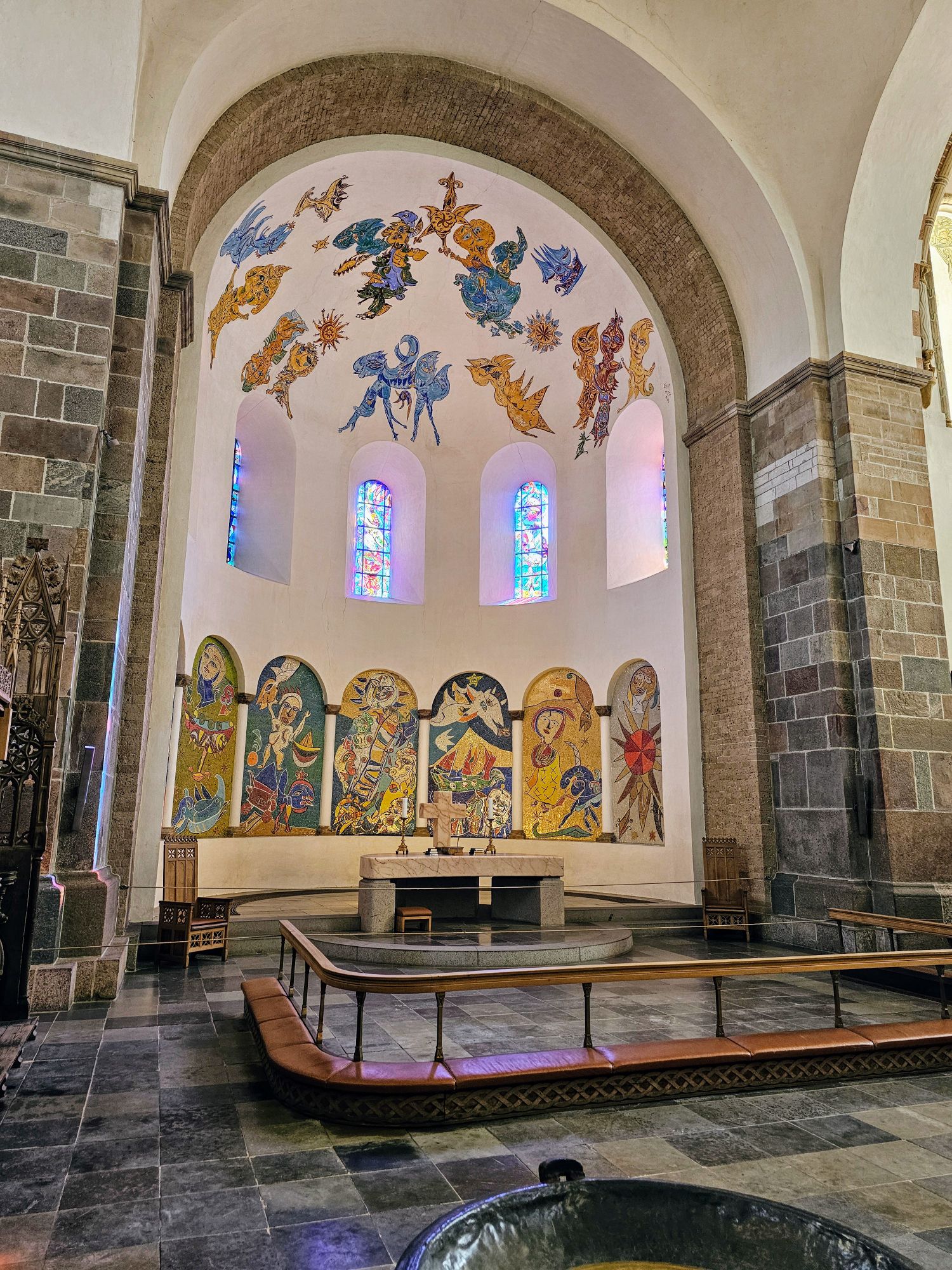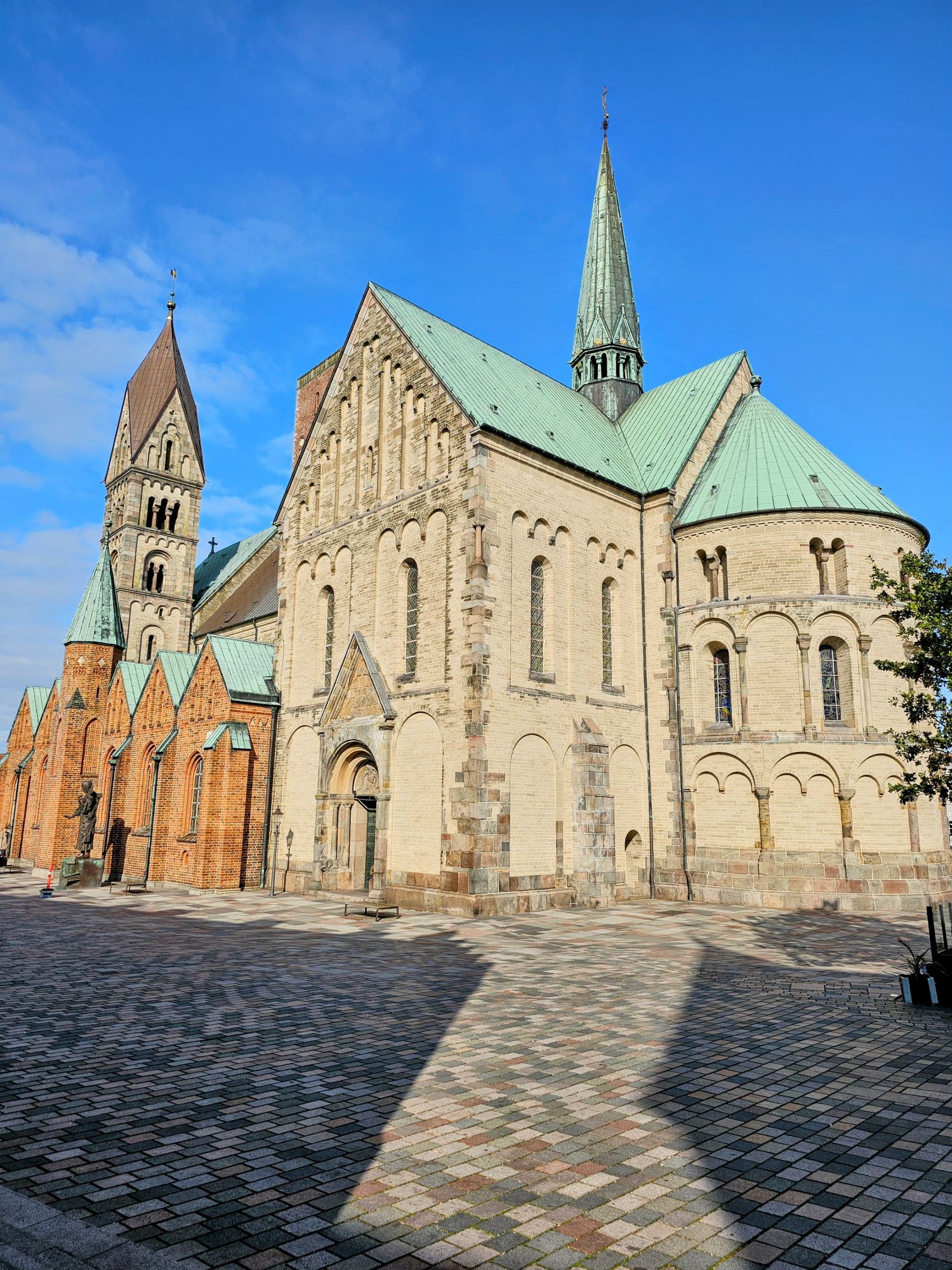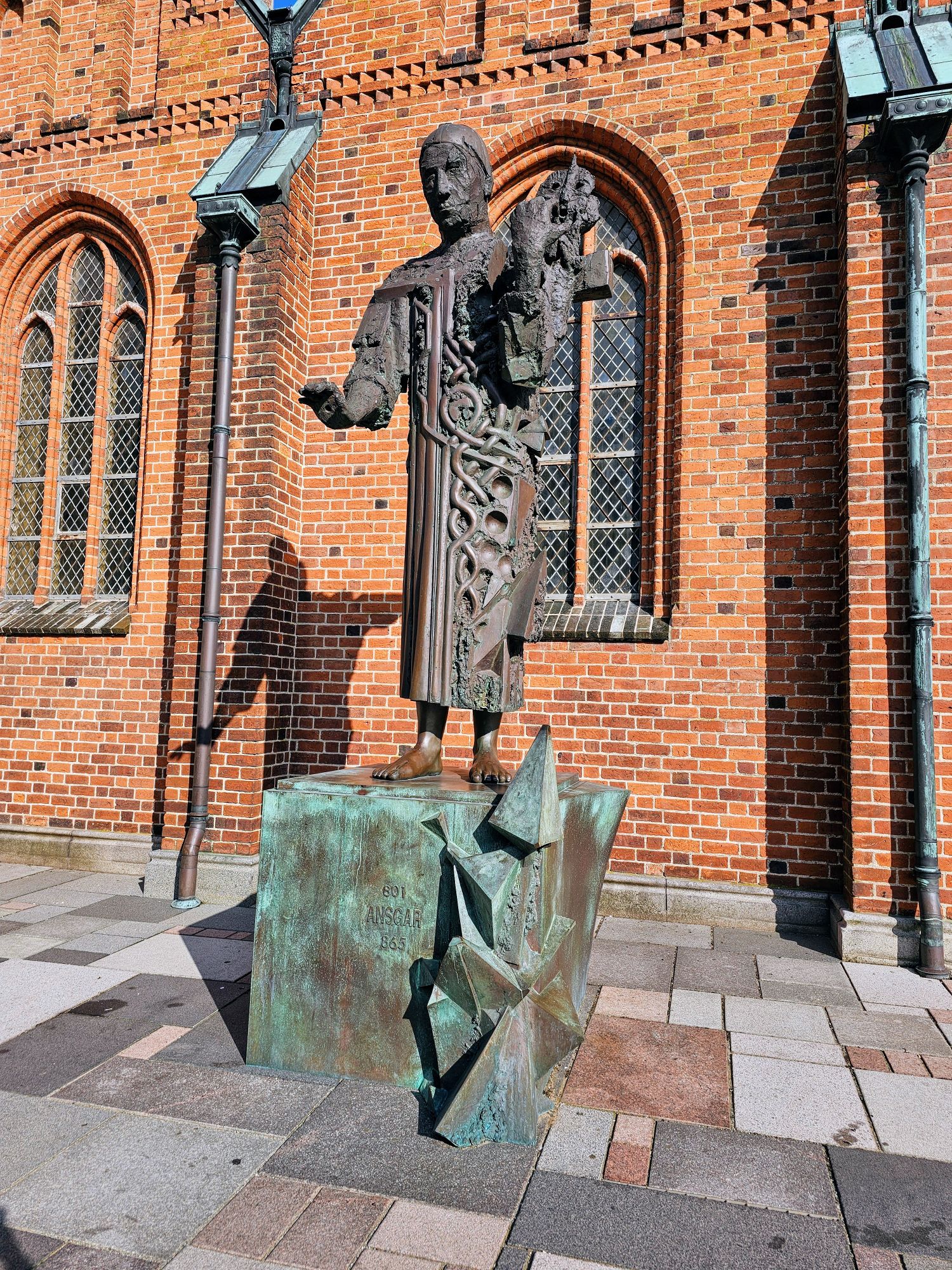One of the main reasons I wanted to visit this part of Denmark is how impressed we were when we visited the Wadden Sea while we were in The Netherlands. After looking into some information provided by our hotel, we ended up spending the entire day in the Wadden Sea National Park.
First up, we visited the Visitor Center, where they have this wall map that outlines the extent of the Wadden Sea. You can see “Ribe” in the upper right. We previously visited the island of Terschelling, taking a ferry from Harlingen which is in the lower left. The region is quite large, spanning The Netherlands, Germany and Denmark.
They have a touch aquarium in the visitor center with various fish, crabs and other marine life that live in the Wadden Sea. This fish, that you can practically see through, is called a Plaice.
We couldn’t spend a lot of time in the visitor center as we had booked a tractor-bus tour to a local island. Here is a shot of the tractor-bus.
The tour takes you to the island of Mando, which is only accessible by a road that is completely submerged at high tide. The locals, of which there are currently 27, are therefore cut off from the mainland twice a day. Here is a shot of the roadway as we start out towards the island.
These man-made structures are apparently in place to prevent erosion of the road and the island.
Here is an aerial view of the island at low tide.
We got to the small town on the island just in time for lunch. This little Cafe was quite good, and they had decent local beer!
We walked over the embankment that protects the island and down towards the water. This marker has plaques affixed which note the water level during specific storm surges over the years.
These protective structures make for some excellent photos!
We were once again lucky with perfect weather!
We saw this huge blue jellyfish on the beach, and I’m curious, can they survive until the next high tide? This one apparently has a very nasty sting, so I wasn’t about to touch it!
The first church on this island was mentioned in 1340. Storm surges washed away two churches in the 16th and 17th centuries, so the current church, built in 1639, was built on the highest spot on the island.
The interior is quite cozy. As with nearly every church in Denmark, there are several ship models hanging from the ceiling. This is the first one where we’ve seen a fishing boat, which is a nod to the islands fishing past. I’m going to assume the interior purple colors are a more recent addition.
This well preserved windmill dates from 1832. It’s apparently open for tours from time to time, but unfortunately not while we were there.
On the way back from Mando our tractor-bus left the roadway and started driving right across the mud flats. It was a much slower ride than on the road, but we also cut off quite a bit of driving. This is a pretty cool little trip, and while there wasn’t a whole lot to do on the island, it was worth it for the experience.
That evening we ventured into the old part of Ribe, and let’s say this little town is hard to find parking in! Ribe is the oldest town in Denmark, so the streets are quite narrow and parking is pretty limited. Fortunately we found a spot, and had dinner at an old Inn called Weis Stue, with an interior that dates back to the 1700’s.
The Inn is one of the oldest in Denmark, having been built in 1600. Check out how the facade is leaning to the right, and the supporting beam for the second floor seems to have been through an earthquake or two!
The beautiful Ribe Cathedral is right outside the Inn. Note the differing styles of the church. Yes, it’s all one building.
One of the benefits of dining at Weis Stue is this is the starting point for a free nightly tour of the old town by the Night Watchman. These volunteers show up every night at 8:00 PM and dramatically walk you around for 45 minutes, telling stories laced with history.
The Night Watchmen were the police of their day, patrolling the city to keep the peace and to warn about storm surges. This job was eliminated in 1902, but for tourism they started the tours in 1932. It’s in Danish and English, but the English version was MUCH shorter than the Danish one, so I think we missed quite a bit. Some Germans asked if he could do it in German, and he gave a stern “Nein!”
The next morning we had to check out of our hotel fairly early, so we drove back into the old part of Ribe to see a little more. The Ribe River runs right through the middle of the town before dumping into the North Sea, and is the reason the town developed as a center of commerce in the early 8th century.
The Ribe Cathedral was open so we were able to check it out. The cathedral dates to the Viking Age, and was the first Christian church in Denmark. The artwork around the altar was quite unique. This was done by Carl-Henning Pederson, between 1983-1987, so they are fairly recent.
The original church was built in 860, but the current church was built over 100 years between 1150 and 1250.
The entire town of Ribe was destroyed by a fire in 1176, but a portion of the church survived. It was repaired with different building materials, so the church looks like a mish-mash of several projects and styles.
This interesting statue outside the church is Ansgar, who apparently only has one name like Cher or Madonna. Ansgar started the first church at this site in 860. He was known as the “Apostle of the North” for having brought Christianity to Saxony (now northern Germany and Denmark).
Up next, we make our way to Svendborg, Denmark, our last stop of the trip.
